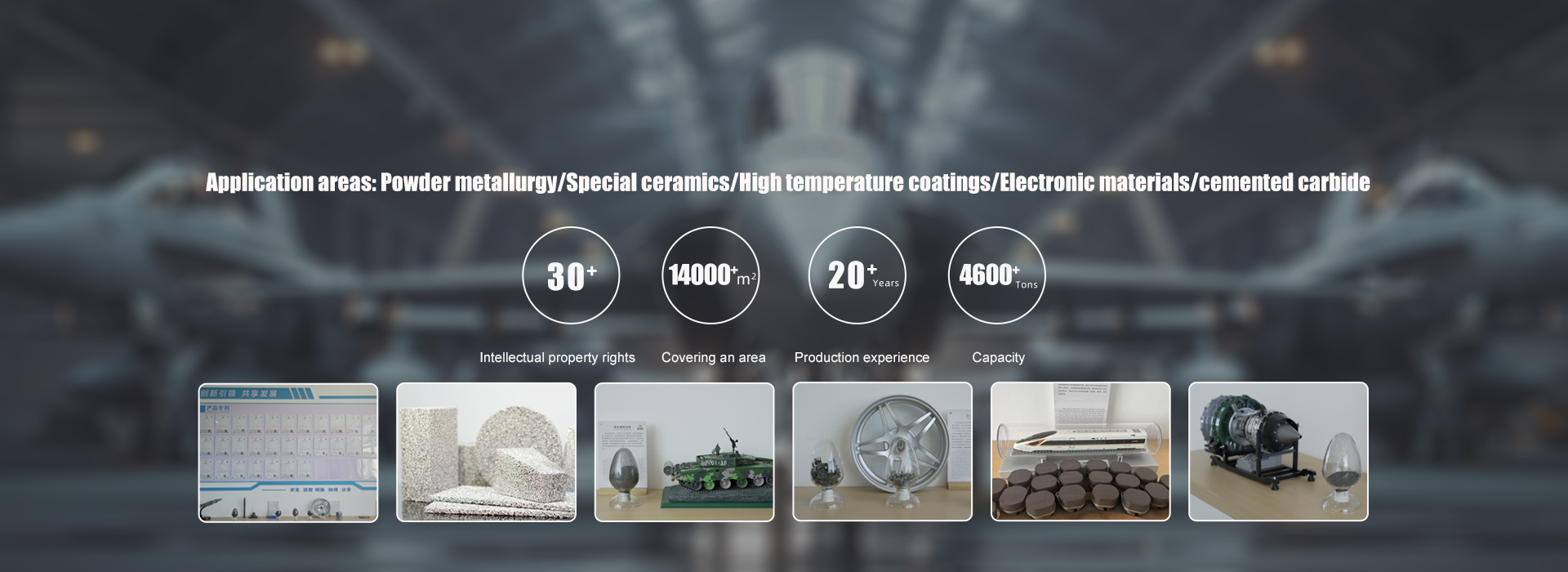Cerium boride is an inorganic compound with the chemical formula CeB6, composed of cerium and boron elements. Cerium boride has various applications, especially in the fields of electronics and materials science. Its relative atomic mass is also an important parameter that plays a crucial role in research and applications. Cerium hexaboride (CeB6) is a cathode material with extremely high electron emissivity due to its lower work function. It is more resistant to carbon pollution and has a longer lifespan than lanthanum boride cathodes. It is widely used in fields such as electron microscopy, microwave tubes, electron beam etching, electron beam welding, X-ray tubes, and free electron lasers. Cerium hexaboride crystals have been successfully applied in desktop scanning electron microscopes, becoming excellent and stable filament materials.
Nature
The typical operating temperature for cerium hexaboride is 1450 ° C. Cerium hexaboride, like lanthanum hexaboride, slowly evaporates during cathode operation. The CeB6 cathode can maintain its optimal shape for a longer period of time at an operating temperature of 1850 K, resulting in a longer lifespan. At the same time, due to its evaporation rate being about 30% slower than lanthanum boride, the hot cathode coating of cerium boride is also more difficult to remove than lanthanum boride.
Application
Cerium hexaboride is mainly used as a coating for hot cathodes, or the hot cathode is directly composed of cerium hexaboride crystals. Cerium hexaboride (CeB6) and lanthanum hexaboride (LaB6) are often used as high current hot cathode coatings. Hexaborides have a low work function, around 2.5 eV, and also have a certain tolerance to cathode contamination. Cerium boride cathodes have a lower evaporation rate than lanthanum boride at 1700 K, but they become consistent at 1850 K and even have higher evaporation rates above that temperature. Cerium boride cathode has a lifespan 50% longer than lanthanum boride due to its higher resistance to carbon pollution. The brightness of boride cathodes is ten times that of tungsten cathodes, and their lifespan is 10-15 times that of tungsten cathodes. Some laboratory experiments have shown that CeB6 is more tolerant to the negative effects of carbon pollution than LaB6. They are commonly used in applications such as electron microscopes, microwave tubes, electron beam etching, electron beam welding, X-ray tubes, and free electron lasers.
The structure of cerium boride
Cerium boride has a special crystal structure and belongs to the cubic crystal system. Each clock atom is surrounded by six boron atoms, forming an octahedral structure. The stable structure and unique electronic structure of boron doped clock crystals provide a foundation for their application in materials science.
The significance of relative atomic mass of cerium boride
Relative atomic mass refers to the ratio of the mass of an element to that of a proton. For complex compounds, relative atomic mass can be used to calculate the proportion of different atoms in the compound. Knowing the relative atomic mass of cerium boride can help us better understand the composition and properties of this compound.
Calculation method for relative atomic mass of cerium boride
To calculate the relative atomic mass of cerium boride, we need to know the atomic mass of cerium and boron. The atomic mass of cerium is about 140.116, and the atomic mass of boron is about 10.811. The number of cerium atoms in cerium boride is 1, and the number of boron atoms is 6. Therefore, the relative atomic mass of cerium boride can be calculated as follows:
(1X 140.116)+(6 X10.811)=220.542
Therefore, the relative atomic mass of cerium boride is approximately 220.542.
Application of relative atomic mass of cerium boride
1. Material characterization
The relative atomic mass of cerium boride can be used to characterize and determine its chemical composition. By measuring the mass of cerium boride and calculating its relative atomic mass, the ratio of cerium to boron in cerium boride can be determined. This is very important for studying the properties and applications of cerium boride.
2. Boride film growth
Cerium boride thin film is an important functional material with wide applications in the field of electronics. The growth of cerium boride thin films can be achieved through different methods, and one important parameter is to control the relative atomic mass of boride. By adjusting the ratio of chemical substances and synthesis conditions, the ratio of cerium and boron in cerium boride thin films can be controlled, thereby regulating the properties and functions of the films.
3. Electronic structure calculation
The electronic structure of cerium boride is of great significance for understanding its properties and applications. By calculating the relative atomic mass of cerium boride, theoretical calculators can determine the electronic structure and band structure of cerium boride. These calculation results can be used to interpret experimental observation data and guide the design of new cerium boride materials.
4. Other applications
Cerium boride also has a wide range of applications in other fields, such as catalysts, magnetic materials, etc. In these applications, the relative atomic mass of cerium boride can affect its properties and reaction characteristics. Understanding the relative atomic mass of cerium boride can help optimize its properties and expand its application fields.
✕

banner

We aspire to become a well-known enterprise in the global production of functional ceramic powders, new energy storage materials






